Author: Mizuki Ichihira & Valeria
When reading on a smartphone, we recommend turning the screen to landscape mode.
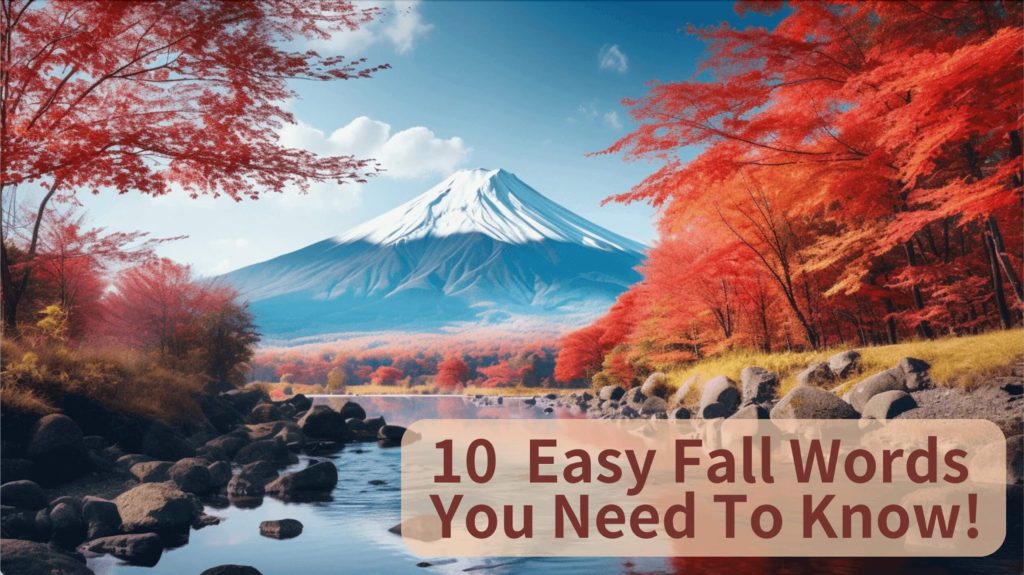
Here comes another season! Fall (Aki) arrived, with tasty food and colorful views full of Momiji! Here are our top 10 Japanese fall words you should know!
10 Easy Fall Words You Need To Know!
1. 秋・Aki | Fall
Not everyone knows that because spring and cherry blossom season is a very well-known strong point of Japan. However, fall is a perfect season to visit Japan too!

| Example: |
| 秋の散歩は気持ちがいいです。 |
| Aki no sanpo wa kimochiga iidesu. |
| Taking a walk in autumn feels pleasant. |
2. 紅葉・Kouyou | Autumn leaves
The prominent feature of this season is the tree’s leaves turning red and yellow. This makes Japanese mountain landscapes beautiful. This process has the name Kouyou・こうよう, in kanji 紅葉. In addition, you can also read these kanji as Momiji・もみじ, which is the maple tree.
Japanese would organize travels and walks around the country to “hunt the Momiji.” There’s a perfect word for that, which is Momijigari・もみじがり, literally “hunting red leaves”. In fact, the kanji 紅 ・ kurenai, means “bright red / vermillion”, while 葉 ・ ha, is “leaf”.
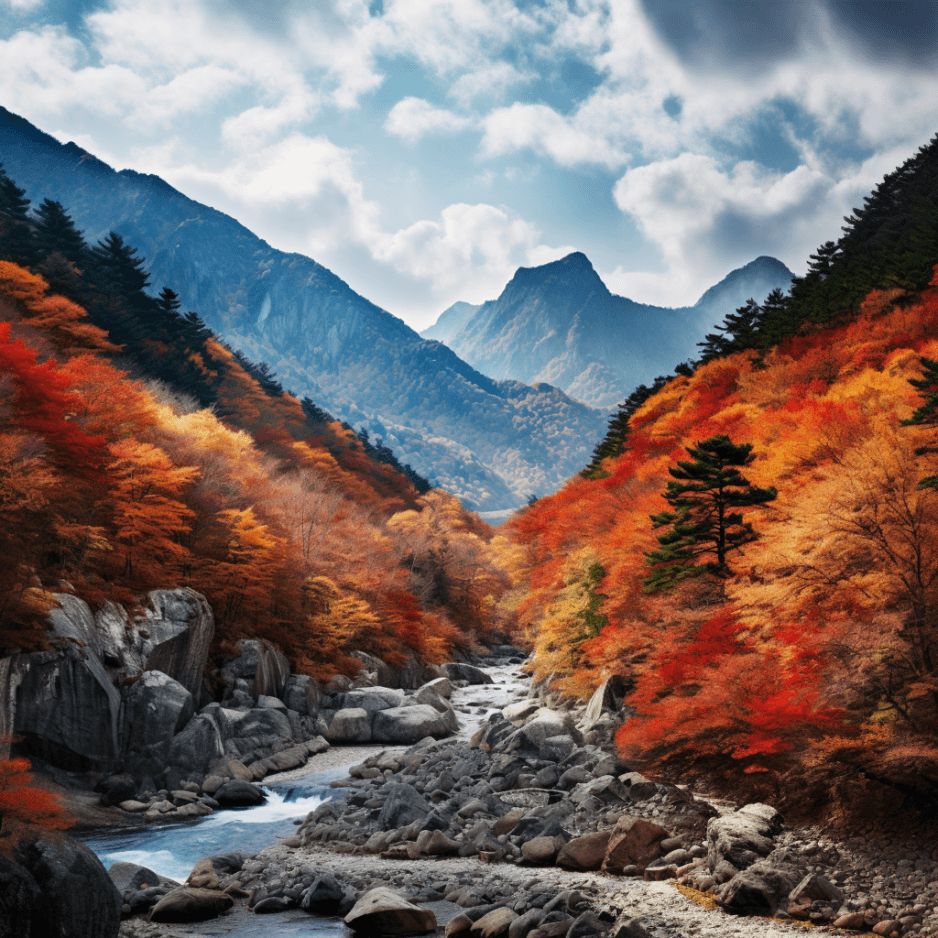
| Example: |
| 紅葉の美しさは、日本の秋の魅力の一部です。 |
| Kouyou no utsukushisa wa nihon no aki no miryoku no hitotsu desu. |
| The beauty of autumn foliage is part of the charm of Japanese autumn. |
3. 落ち葉・Ochiba | Fallen leaves
If there's a word for the beginning of the leaves' color changing, there's also one for the end!
That's Ochiba・おちば, in kanji 落ち葉. As we saw, the second kanji is “leaf.” This word is preceded by the verb 落, which means “to fall.” Therefore, this word means “the fall of the leaves / fallen leaves” -
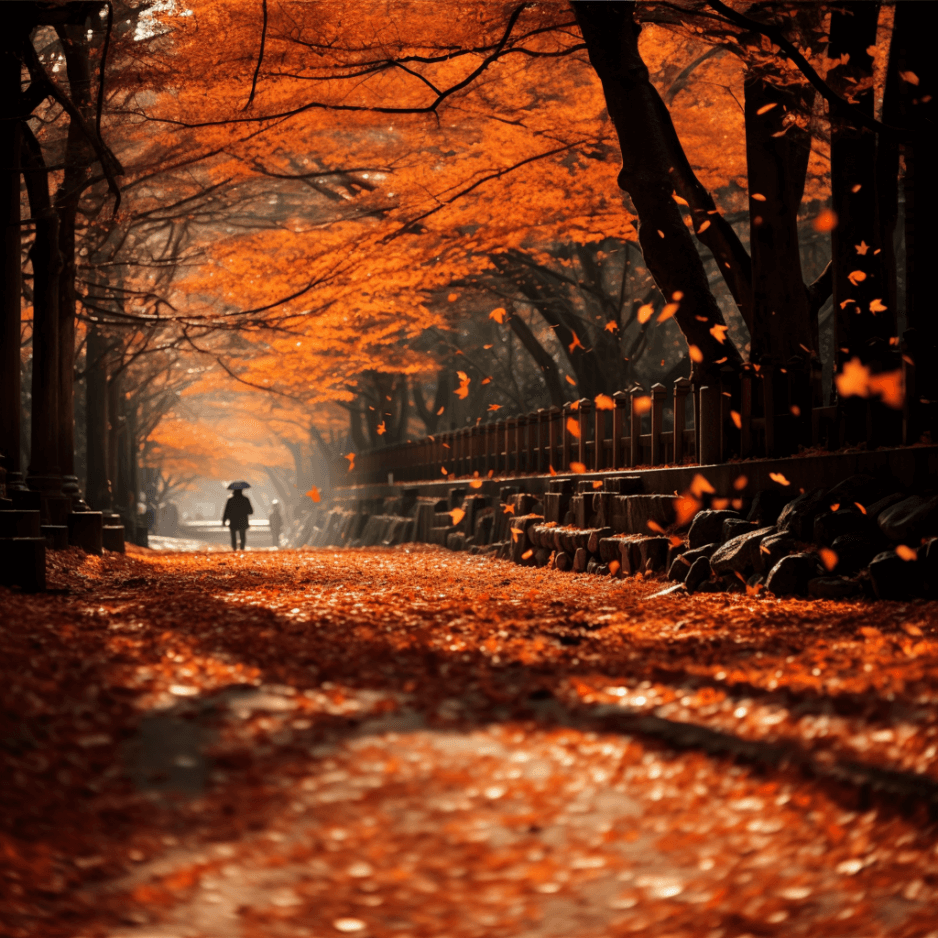
| Example: |
| 庭にはたくさんの落ち葉が積もっています。 |
| Niwa niwa takusan no ochiba ga tsumotte imasu. |
| There are many fallen leaves in the garden. |
4. ハロウィン・Harowin | Halloween
Even in Japan, on the 31st of October, there's Halloween!
In Japan, the first official Halloween occurred in 1983, thanks to the first "Hello Pumpkin parade". This event is held in Harajuku, the most eccentric part of Shibuya. Then, at the end of the '90, Tokyo Disneyland began to celebrate Halloween too. It had such great success that the Japanese people did not stop to celebrate it!
The main purpose of Japanese Halloween is to dress up and make some cosplay. Likewise, in big amusement parks, Halloween is a big event! They recreate horror scenes to scare you while having fun in the park!
Of course, the word itself is from English, so use the katakana ハロウィン.
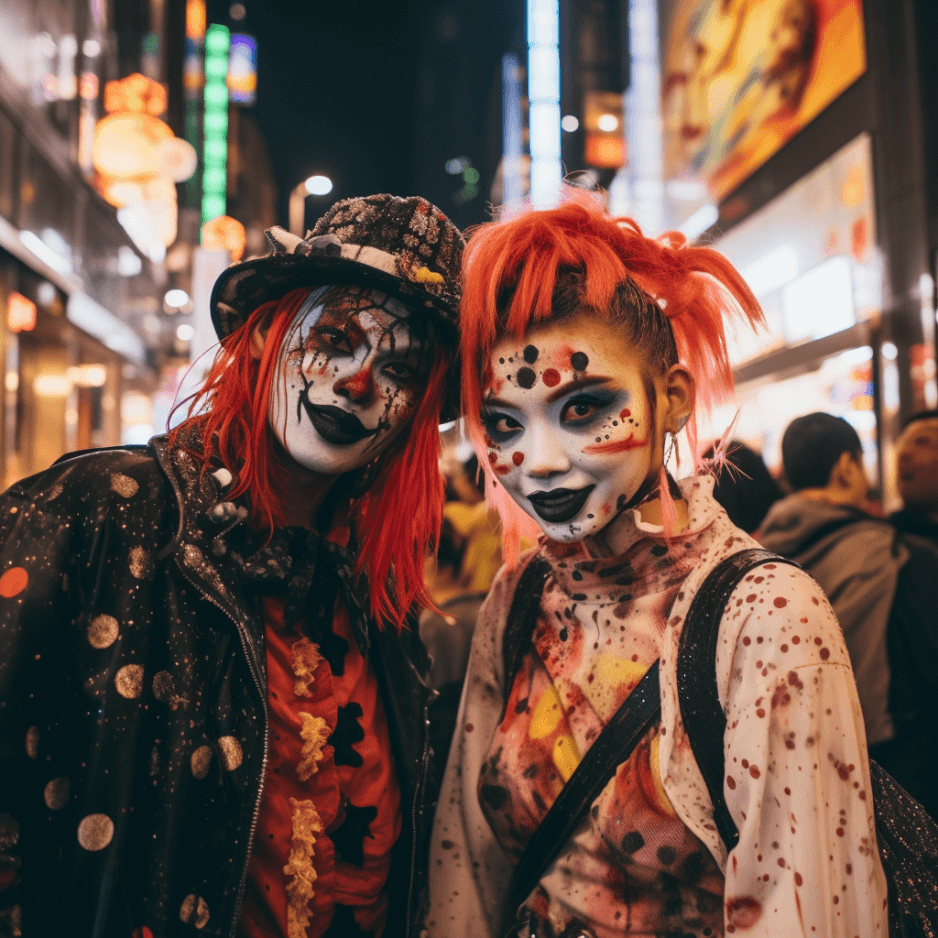
| Example: |
| ハロウィンの仮装は、一年で一番楽しみなイベントの一つです。 |
| Harowin no kasou wa ichinen de ichiban tanoshimi na ibento no hitotsu desu. |
| Halloween costumes are one of the most anticipated events of the year. |
5. かぼちゃ・Kabocha | Squash, Pumpkin
Speaking of Halloween, the first must-known word about it is Pumpkin! It's the number 1 decoration in every country.
Hence, if you use it as a lantern, remember kabochachouchin・かぼちゃ提灯. In kanji, write it 南瓜・かぼちゃ, the "melon of the South"! Being " 瓜" (uri) the kanji that refers to cucurbit, the pumpkin's family.
Furthermore, Kabocha is not only used for decorations but also in a lot of fall dishes. Its sweet flavor is the main difference between the Japanese kabocha and the Western pumpkin. In addition, it's an excellent source of beta-carotene, vitamins B, and C, which are great for immunity, healthy skin, hair, and eyes.
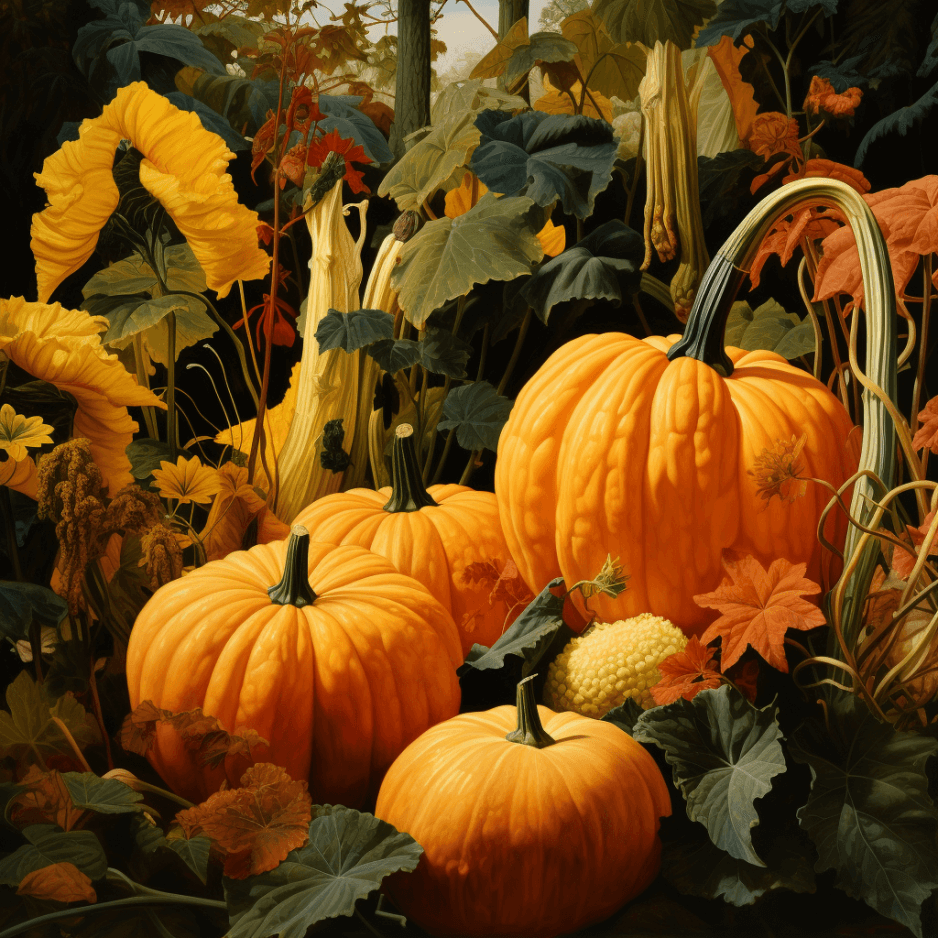
| Example: |
| かぼちゃは、スープやシチューの材料としてよく使われます。 |
| Kabocha wa su-pu ya shichu- no zairyou toshite yoku tsukaware masu. |
| Squash is often used as an ingredient in soups and stews. |
6. 栗・Kuri | Chestnut
Here's another symbol of Japanese fall: chestnuts!
The Japanese version is small to medium size chestnut and more yellow on the inside. Japanese people use them in a variety of dishes that range from savory to sweet.
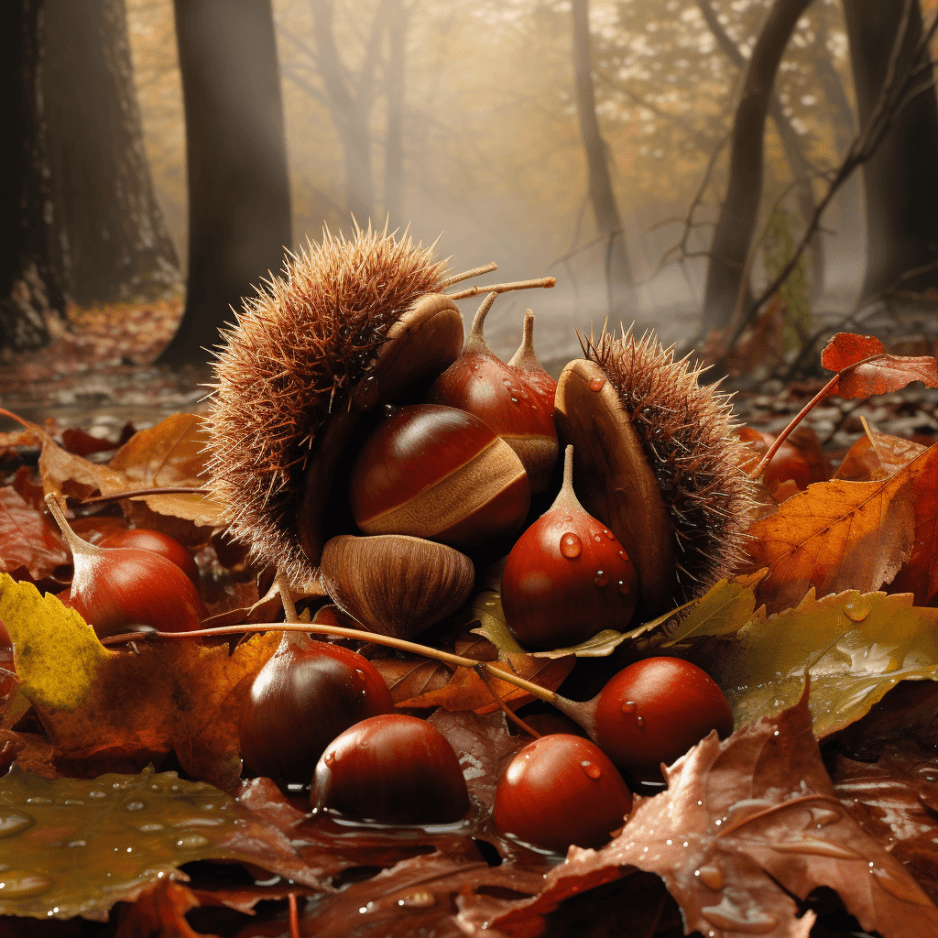
| Example: |
| 山で美味しい栗を拾ってきました。 |
| Yama de oishii kuri o hirotte kimashita. |
| I picked delicious chestnuts in the mountains. |
7. 柿・Kaki | Japanese Persimmon
Kaki is another fall food, which are known for their distinct, honey-like taste and smooth texture. Typically, they are enjoyed fresh as a snack or dessert, but they can also be used in various culinary applications, such as salads, jams, and baked goods. Dried persimmons (Hoshigaki) are also a popular treat.

| Example: |
| 手作りの柿ジャムを作るのが好きです。 |
| Tedukuri no kaki jamu o tsukuru noga suki desu. |
| I like to make homemade persimmon jam. |
8. 台風・Taifuu | Typhoon
Japan is also known for its typhoons, striking every year from May to October. However, the peak is in September. Better for you to remember this simple word. You can write it with this kanji: 台, dai, the counter for vehicles and machines, and 風, kaze, which means “wind”. The pronunciation is Taifuu・たいふう.
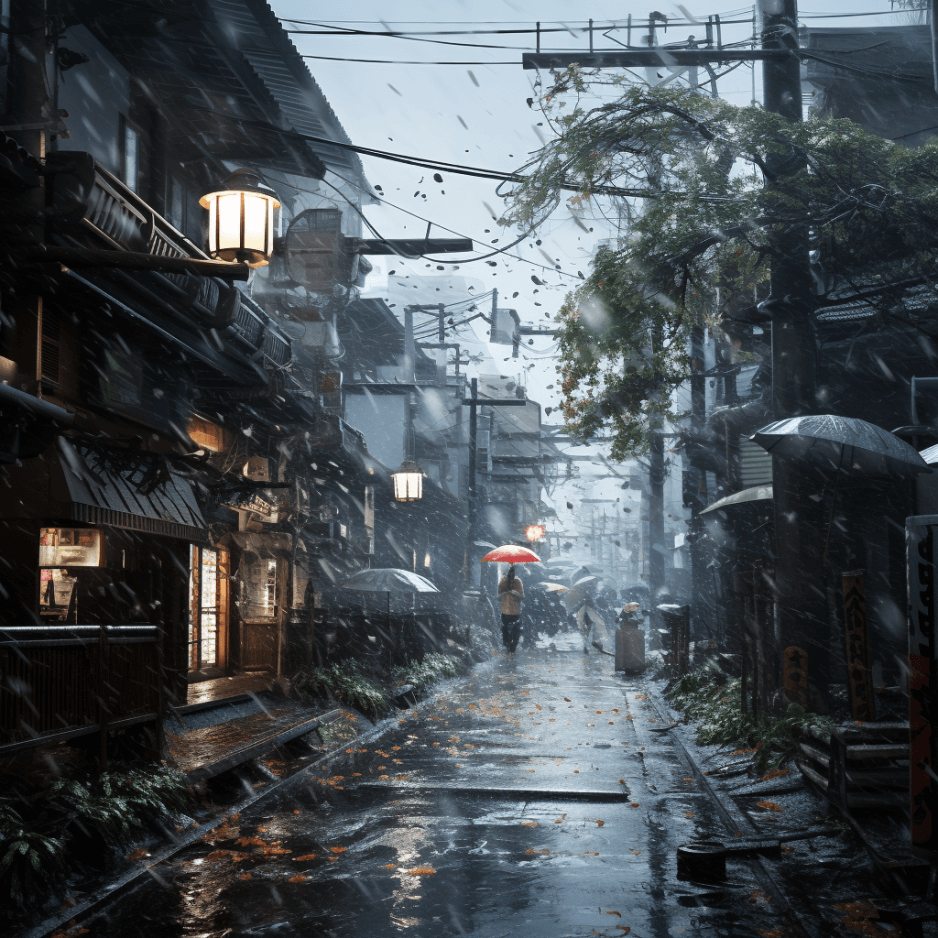
| Example: |
| 台風の影響で雨が激しくなってきました。 |
| Taifuu no eikyou de ame ga hageshiku natte kimashita. |
| The rain has become heavy due to the typhoon. |
9. 七五三・Shichi-go-san
On the 15th of November in Japan, it’s the Shichi-Go-San Festival. This is a traditional rite of passage occurring when kids are seven, five, and three years old. The custom is to dress up your son when he’s 3 or 5 and your daughter when she’s 3 or 7 with a gorgeous kimono and take them to the local shrine to celebrate their growth. It’s also a National Holiday!
This festival has very ancient roots back in the Heian period. It was an age where becoming 5 or 7 was rare due to poor health conditions. In addition, it’s linked to some traditional customs. At the age of three, boys could grow out their hair (they were bald-headed until 3). At the age of seven, girls could use the obi to tie their kimonos instead of simple cords.

| Example: |
| 七五三の日に、子供たちは伝統的な着物を着ます。 |
| Shichi-go-san no hi ni, kodomo tachi wa dentouteki na kimono o kimasu. |
| On Shichi-Go-San, children wear traditional kimonos. |
10. お月見・Otsukimi | Moon viewing
Since ancient times, Japanese writers have noted that the Fall season was the best period to observe the moon.
They thought it was more bright than usual and wanted to thank it for the harvest and pray for the new year. This particular custom was not lost over the centuries. In fact, during September and October months, Japanese people still enjoy going to observe the moon.
Kanji for this word is simple: "O", it's the honorific to put before festivities or names to be more polite. 月・つき, Tsuki is the kanji for "Moon", while 見 ・み, mi means "to look." You can translate it with "moon viewing."
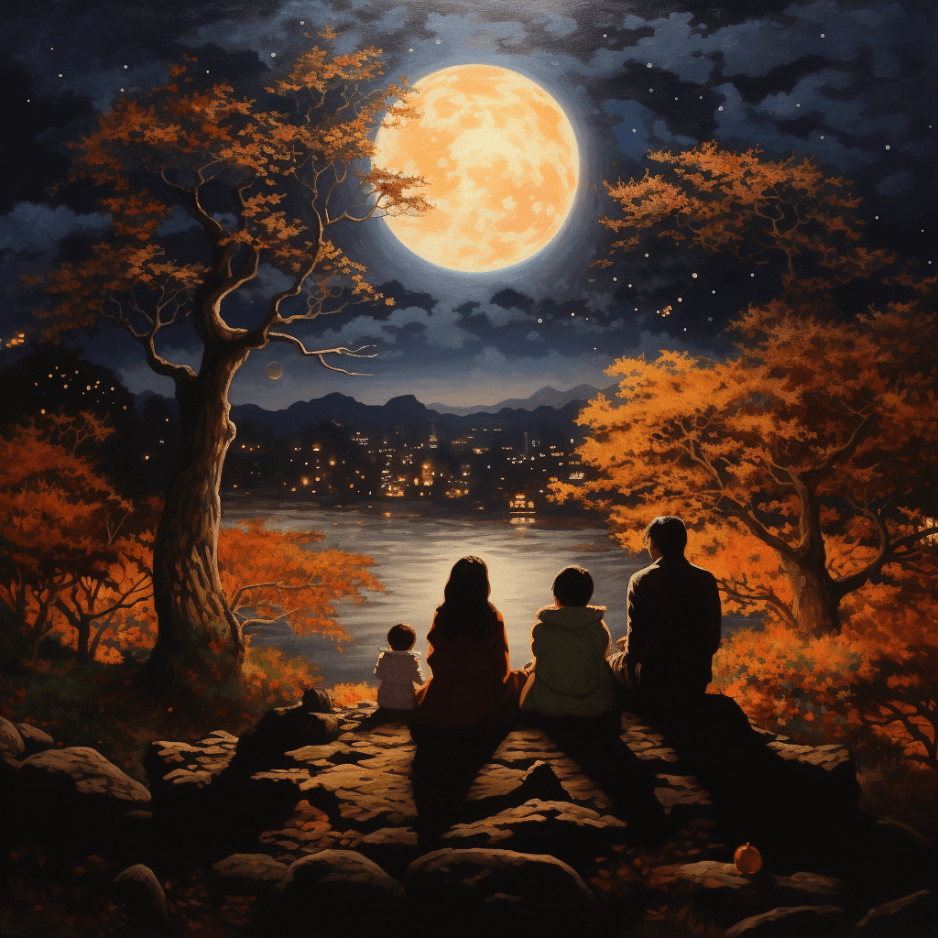
| Example: |
| 秋には毎年家族でお月見を楽しみます。 |
| Aki niwa maitoshi kazoku de otsukimi o tanoshimimasu. |
| Every autumn, my family and I enjoy moon-viewing together. |
Hope you have enjoyed learning useful Japanese words about Fall!
Eager to dive deeper into this topic? Why not discuss it during a real lesson?
Please register as a We member for free to join the conversation on this topic. Once registered, you'll receive a free interactive lesson as a gift to you!
What's your favorite aspect of autumn?
↓

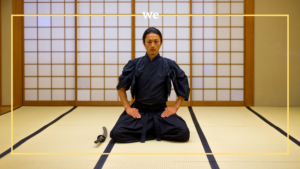

Hello we-japan.com owner, Your posts are always well-supported by facts and figures.